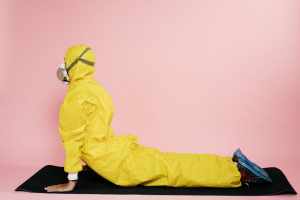A primary symptom that medical experts are noticing during the new wave of COVID 19 is shortness of breath. According to International medical bCollege Football Jerseys brock bowers jersey custom football jerseys Florida state seminars jerseys Florida state seminars jerseys OSU Jerseys OSU Jerseys detroit lions jersey custom football jerseys OSU Jerseys Ohio State Team Jersey custom made football jerseys Iowa State Football Uniforms custom football jerseys florida state football jersey oards, this symptom is occurring due to the outspread of SARS-CoV-2 or coronavirus 2.
It is considered as the new variant that is causing covid-19. Other respiratory issues are occurring as symptoms of the new variant, too, mainly because the virus is affecting the patient’s lungs first.
As per the trend, the covid-19 infection is not always severe, and many people are recovering at home quickly. However, some people need oxygen support after experiencing shortness of breath.
Such a situation calls for intensive care and mechanical ventilation. Moreover, some signs reveal whether a breathlessness situation is occurring due to covid 19 or otherwise. In this article, you will learn about ways to reduce shortness of breath and when to dial an emergency.
What does shortness of breath feel like?
Breathlessness does not occur to everyone in the same way. According to experts, it is a subjective occurrence and can vary in intensity. At the same time, some people feel totally out of breath, some complaint about not being able to inhale satisfactorily.
These are two very different things, and in the case of the latter, the person may experience a tightness in the chest. While this symptom arises mainly during heavy physical activities when a person is panting, it may arise otherwise also.
What are the various symptoms of COVID-19?
A person can experience an extensive range of symptoms if he/she is affected with covid-19. According to the World Health Organization (WHO), the most common ones include fever, fatigue, and dry cough. On the other hand, the CDC (Centers for Disease Control and Prevention) are reporting the following symptoms:
- Fever
- Diarrhea
- Chills
- Vomiting and nausea
- Cough
- Loss of smell and taste
- Muscle aches
- Shortness of breath
- Headaches
- Runny nose or congestion
- Sore throat
According to CDC, some of the common symptoms that usually do not require hospital admission include fatigue, muscle aches, and headaches. Besides, if a person is experiencing a digestive disorder, they are most likely to arise before the respiratory issues.
The CDC also suggests that only 33% of total affected patients experience a loss of smell and taste. Moreover, the same is more common in middle-aged and young people and females. The European Center for Disease Prevention and Control suggests that the most common reasons that may require hospital admission include:
- A fever history
- Confusion
- Breathlessness
- General fatigue
- A cough
The majority of times, shortness of breath accompanies problems such as:
- Tightness or persistent pain in the chest
- Bluish or pale lips, nails, and face
- Confusion
- Difficulty staying awake or waking up
- Loss of movement or speech
- High fever
You must understand that covid-19 symptoms may vary from person to person greatly.
How fast does breathlessness occur?
Covid-19 symptoms may occur anywhere between 2-14 days after being exposed to the virus. Therefore, the maximum incubation period is 14 days when a person is most likely to show symptoms.
However, a lot of patients complain of symptoms arising within the first week only. Besides, there is some research stating that breathlessness is most likely to occur around the fifth day. It is only after this that doctors decide whether or not a patient will require hospital care.
The primary reason for breathlessness is that the SARS-CoV-2 soon affects the lungs once a person is exposed to it. Usually, the lungs inhale oxygen every second, and the alveoli or the tiny air sacs captures the same immediately to transfer it to the blood vessels around.
This is how oxygen makes its way to the bloodstream and spreads throughout the body. Another function of the alveoli is to take in carbon dioxide and let a person exhale the same.
When the coronavirus affects a person’s lung tissues, the outspread is very fast. The epithelial cells standing as walls of the airways are also affected. As a result, the immune system responds and releases inflammation-causing cells.
The entire procedure disrupts the proper flow of oxygen, and as a result, there is a deposition of fluid in the lungs. All the factors, when they occur together, cause breathing problems.
When should you call the doctor?
As mentioned earlier, covid symptoms are different in the case of every person. Therefore, shortness of breath does not mean that the infection is severe. It may also arise due to flu or cold. However, if breathlessness seems to persist and worsen, you must call for an emergency. Some of the other symptoms that require immediate medical attention include:
- Panting or breathing difficulty constantly
- Coughing while inhaling
- Air not reaching the lungs
- Painful breathing or tightness in the chest
- Chest pain while breathing

Valuable tips and breathing exercises
According to the American Lung Association, practicing breathing exercises helps the lungs function more efficiently. As a result, a person experiencing mild covid-19 symptoms may be able to recover at home quickly. Try these strategies:
Belly breathing
In this, you have to involve the diaphragm and belly actively while you are breathing. As a result, the strength of the diaphragm increases, and it functions more effectively. You inhale through the nose and have to place your hands on the belly to feel the same. Now start exhaling slowly, ensuring that the duration will be twice or thrice compared to the inhaling duration.
Breathing through pursed lips
In this, you have to breathe slowly and deliberately. As the name suggests, you have to use the nose for inhaling and exhale through pursed lips. Make sure that the duration will be twice or thrice compared to the inhaling duration.
Breathlessness may also be part of long covid symptoms. It means that there are people who keep experiencing the same symptoms even after recovering for months. While the effects of long Covid are not clear till now, breathlessness is one of them indeed.
The SARS-CoV-2 virus immediately infects the lungs causing several symptoms, including breathing problems. You must closely keep a record of the symptom and seek medical attention when you realize it is worsening.



![Kyla Pratt Net Worth, Early Life, Career [2023] Kyla Pratt Net Worth](https://lessconf.com/wp-content/uploads/2023/06/Kyla-Pratt-Net-Worth-218x150.jpg)



